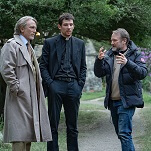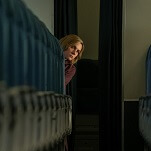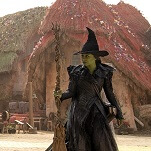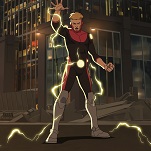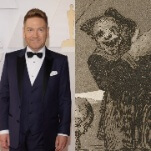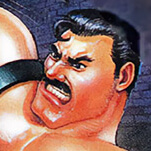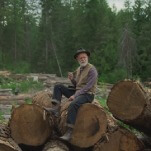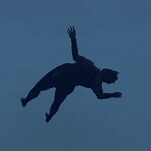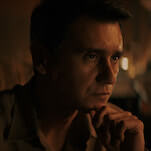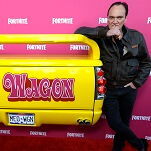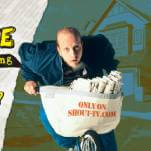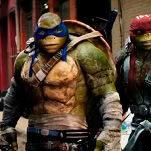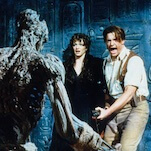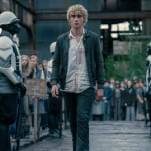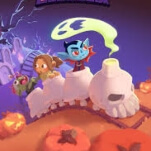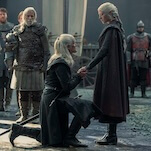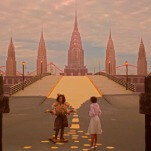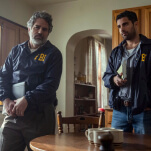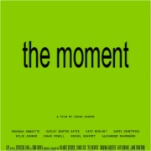Day Of The Animals
Day Of The Animals (1977)
Director: William Girdler
Tagline: “For centuries they were hunted for bounty, fun, and food… now it’s their turn.”
Plot: An opening crawl sets up the premise; like Al Gore’s An Inconvenient Truth, Day Of The Animals deals with the negative effects of global warming on the planet. But while Gore focused on charts, graphs, and melting polar ice caps, director William Girdler sets his sights on a far more serious threat: batshit-crazy wildlife.
While nature guide Christopher George gets his latest group of hikers prepped for a trip into the mountains, a hawk lurks on a sign nearby, watching—and, presumably, plotting. The animals do a lot of plotting in Day. The movie brims with shots of hawks, vultures, mountain lions, a bear, and even tarantulas stalking through the forest. It all implies that some kind of massive animal conspiracy is at work, especially considering how long it takes for them to finally make their move.
George’s group is a mixture of disaster and horror-movie stereotypes. There’s the dim-witted, overly enthusiastic young couple, to contrast with the older, love-in-trouble couple. (The woman in the latter is played by Susan Backlinie, famous as the first person to die in Jaws. She doesn’t fare much better here.) There’s the famous football player who’s dying of cancer, and a son (played by apparent dark elf Bobby Porter) shackled with a hilariously shrewish mother. Richard Jaeckel plays a friendly professor who most likely got his degree by mail, and Michael Ansara is on hand as the Native American who senses something… is wrong. Lynda Day George provides the closest thing to a love interest our nominal hero ever gets, as an anchorwoman in search of a story who may just learn some valuable lessons about not being killed by wild dogs. And, in perhaps his greatest role, we have Leslie Nielsen as the world’s biggest asshole.
This disparate band of pissy, argumentative twits takes a helicopter ride into the forest for a weekend walk. It should be peaceful and scenic, although from what we see of the area, it’s mostly trees and rocks. (Still, trees and rocks would’ve been a lot more pleasant than getting assaulted by a swarm of vultures.) And back in town, things aren’t going much better. The sheriff has to deal with scenery that wouldn’t look out of place in a Serial Killers Monthly photo-spread. Then the animals show up and start murdering folks. As they’re torn to pieces by wild rats, you can almost hear them screaming, “At least this is better than the wallpaper!”
Key scenes: After a wolf attacks Backlinie in the night, the group decides to split up, with Backlinie and her husband headed toward the ranger station, and the rest pressing onward. Never mind how little sense this makes, how any nature guides worth their salt would never leave neophytes—one of them badly injured—to find their way home on their own; it all builds up to a glorious death scene, when Backlinie, after one last argument, is set upon by vultures. In the ensuing struggle, she goes over a cliff to the rocks below, a sequence that should be horrifying but isn’t, due to some less-than-perfect special effects:
But Day finds perfection in cataloging Nielsen’s rapid fall from dickhead to attempted-rapist-murderer, with a slight dash of philosopher-king just to keep things fresh. Tensions in George’s group mount as their situation worsens; everybody’s creeped out by the animal assaults, and what’s worse, the food supply supposedly left for them along their hike was destroyed before they found it. Debate turns into argument becomes open rebellion, and Nielsen leads half of the group, including the mother-and-son team and the younger couple, away towards the much-discussed ranger station. Once he’s separated from the other alpha males, Nielsen’s tentative grasp on reality begins to slip. He takes off his shirt, gores the young man with a stick, and, in a speech so stupid it demands to be quoted, goes off the rails completely:
